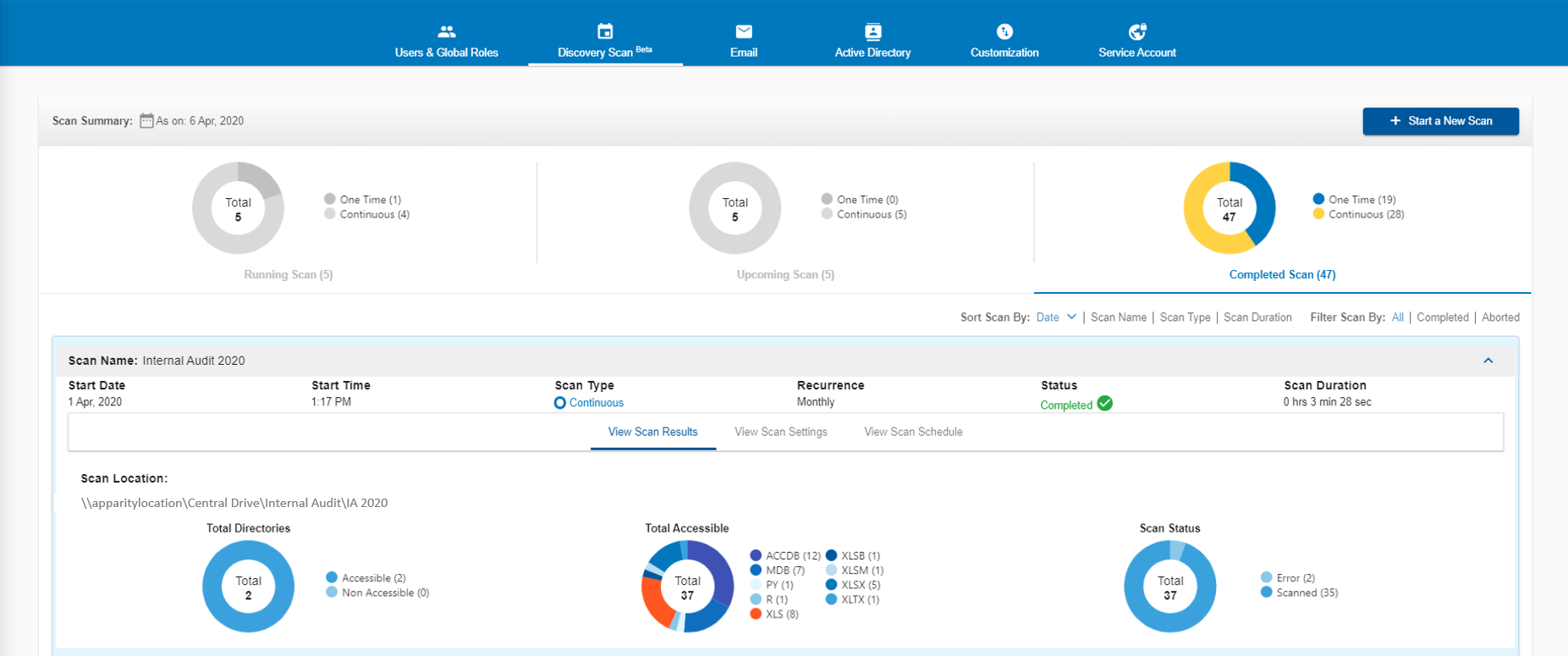Scan Setup & Tracking Console
To find all your critical EUCs, you’ll need a comprehensive and configurable scanning tool. Apparity’s web-based Discovery Console provides a user-friendly and transparent method of configuring, scheduling and monitoring EUC scans.
Configuration & Scheduling
Apparity’s Discovery scan setup is quick and easy. The web-based console eliminates the need to access the server and guides the user step-by-step through the configuration and scheduling process.
- Scan Locations
Select from SharePoint and shared drive locations. - Flexible Exclusion Patterns
Easily remove specified sub-folders or files/folders containing keywords from the results. - Service Accounts
Configure multiple service accounts so that separate accounts can be used for different scans, if desired. - File Type Filtering
Select “freshness” of files as well as the file types discovered. - Customizable Scheduling
Run a one-time scan and/or setup recurring scans on a custom basis going forward.
This amount of flexibility ensures an organization can find the spreadsheets and EUCs important to them at a cadence that aligns with their internal processes.
EUC Scan Tracking Capabilities
Once a scan has been scheduled, it is crucial that a user has the ability to review scan progress, scan schedule and scan completion metrics. Apparity provides comprehensive oversight of all scans that have been setup using the web-based console in three sections: Running Scans, Upcoming Scans and Completed Scans.
- Running Scans
View all scans currently underway and track the progress of each scan with live updates of results. If a scan encounters an error, Apparity provides troubleshooting capabilities to get the scan back on track. - Upcoming Scans
Displays the continuous incremental scans scheduled to run in the future, which can be enabled/disabled if desired. - Completed Scans
Provides insight into the results of completed scans so a user can confirm a successful scan.
For all scans, Apparity provides confidence and control throughout the entire process.





